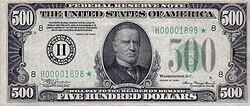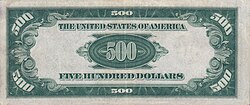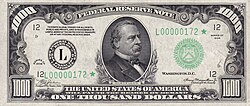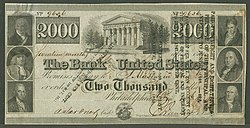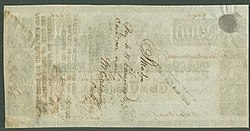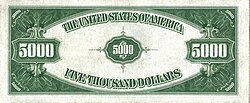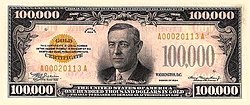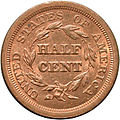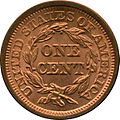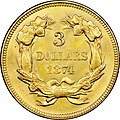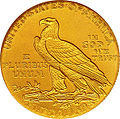Treasury notes
The U.S. Dollar has numerous discontinued denominations, particularly high denomination bills, issued before and in 1934 in six denominations ranging from $500 to $100,000. Although still legal tender, most are in the hands of collectors and museums. The reverse designs featured abstract scroll-work with ornate denomination identifiers. With the exception of the $100,000 bill, these bills ceased production in 1945, and were recalled in 1969. Of these, the $100,000 was printed only as a Series 1934 gold certificate and was only used for internal government transactions. The United States also issued fractional currency for a brief time in the 1860s and 1870s, in several denominations each less than a dollar. [2]
This page is based on this
Wikipedia article Text is available under the
CC BY-SA 4.0 license; additional terms may apply.
Images, videos and audio are available under their respective licenses.












